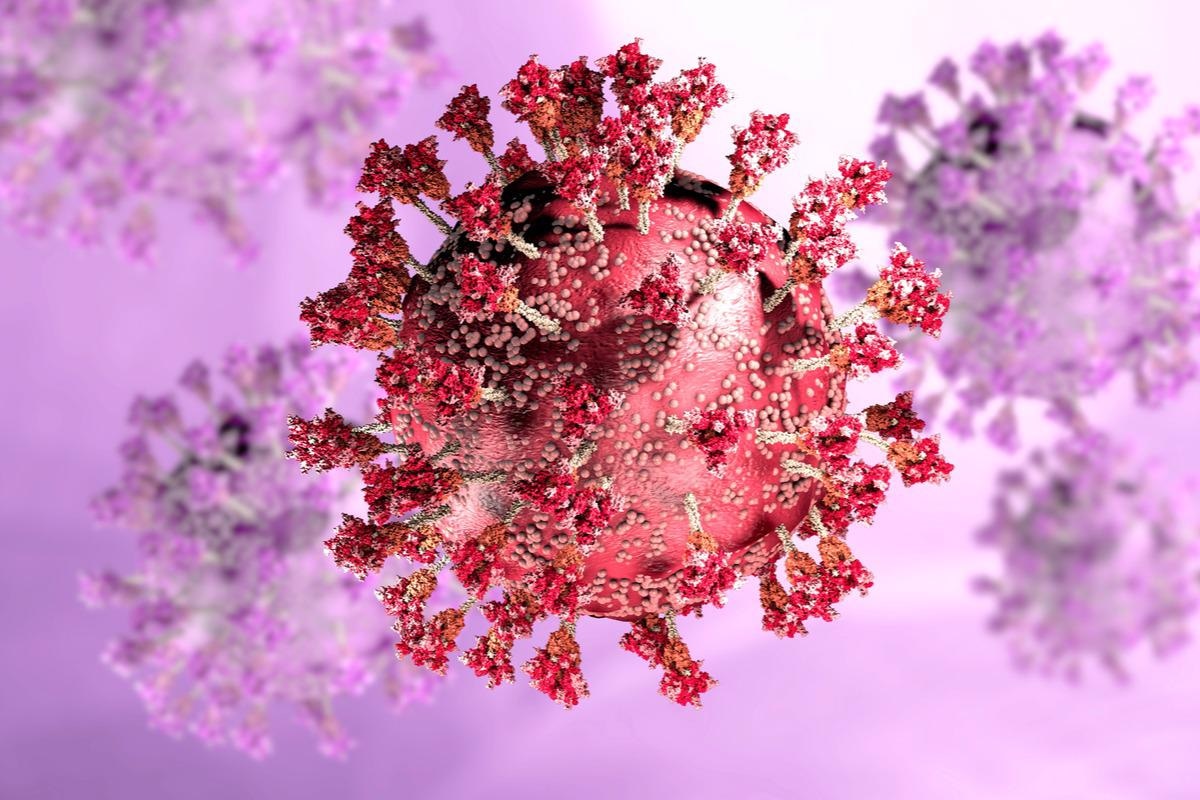Over the past year, a series of severe acute respiratory syndrome coronavirus 2 (SARS-CoV-2) variants have emerged in different parts of the world – of which Alpha and Delta had widespread global reach while other variants like Gamma, Beta and Lambda did not show prominence in the east.
 Study: SARS-CoV-2 Omicron-B.1.1.529 leads to widespread escape from neutralizing antibody responses. Image Credit: Naeblys/Shutterstock
Study: SARS-CoV-2 Omicron-B.1.1.529 leads to widespread escape from neutralizing antibody responses. Image Credit: Naeblys/Shutterstock
South Africa saw the predominance of the Beta variant, which was later replaced by Delta. Thereafter, there was a rapid emergence of Omicron (B1.1.529)—despite the background of high Beta immunity—implied that the virus may have evolved to escape neutralization by Beta-specific serum.
The Omicron spike (S) protein has 30 substitutions plus the deletion of 6 and insertion of 3 residues, in contrast to 16 substitutions in the S proteins of other variants of concern (VOCs). Specific hotspots for the mutations are the angiotensin-converting enzyme 2 (ACE2) receptor-binding domain (RBD) and the N-terminal domain.
The study
A recent study published in Cell reported the neutralization of Omicron by a large panel of sera collected from convalescent early pandemic, Alpha, Beta, Gamma and Delta infected individuals, as well as among vaccinees receiving three doses of the Oxford/AstraZeneca (AZD1222) or the Pfizer BioNtech (BNT16b2) vaccines.
Data from the widespread reduction in the neutralization activity of serum from various sources were used to plot an antigenic map – where Omicron occupied the most distant position from early pandemic viruses. The current vaccines were developed based on the earlier VOCs.
The results revealed that Omicron escapes neutralization by most potent monoclonal antibodies (mAbs) which arose after the early pandemic and Beta variant. The present study describes the mechanism of escape caused by the numerous mutations present in Omicron RBD, encompassing those from most mAbs developed for prophylactic or therapeutic use.
Findings
The Omicron VOC exhibits changes throughout its proteome but S changes dominate. Ten of these were found previously in at least two lineages – of these, six have the same amino-acid substitution in >75% of the sequences and only one (E484A) has a unique substitution in Omicron.
Overall, the Omicron RBD has 15 alterations in the RBD, while the NTD has numerous changes – four amino acid substitutions, six amino acids deleted and three amino acids inserted. The Alpha RBD has a single change – at N501Y, and contributes to the ACE2 binding footprint. Beta has two additional mutations in the RBD – K417N and E484K, similar to the Gamma mutations – K417T, E484K, N501Y. Meanwhile, Delta mutations – L452R and T478K, fall just peripheral to the ACE2 binding footprint. All these variants have at least one RBD mutation in common with Omicron. On the other hand, of the 15 Omicron RBD alterations, nine map to the ACE2 binding footprint – K417N, G446S, S477N, E484A, Q493R, G496S, Q498R, N501Y, Y505H with N440K and T478K, just peripheral.
Besides the RBD alterations, mutations in Omicron occur on the right flank – G339D, S371L, S373P and S375F, the last three of which are adjacent to a lipid-binding pocket. It was speculated the lipid-binding pocket readily empties during protein purification. Loss of lipid enhances RBD presentation to the target cell.
Until now the antigenic properties of variant viruses have been well described by assuming each change produces only a local alteration in the structure; this was used to rationalize the serological impact of the changes in Omicron.
Notably, mutations seen in the NTD are present on exposed flexible loops, which differ from those in SARSCoV-1 and are likely antigenic. The pattern of deletions and insertions seen in Omicron consistently changes those loops that are most different from severe acute respiratory syndrome coronavirus 1 (SARS-CoV-1), to be more SARS-CoV-1-like, at least in length.
The density of mutational changes detected in Omicron S is extraordinary—more than three times that observed in previous variants. Within S, as observed for other variants, the NTD, RBD and the furin cleavage site region are hotspots for mutation, while in the RBD, mutations are concentrated on the ACE2 interacting surface and the right flank.
Most potent neutralizing antibodies block the interaction of S with ACE2, thus, preventing viral attachment to the host cell. There are two other classes of potent neutralizing mAbs – antibodies binding in close proximity to the N343 glycan exemplified by Vir S309—which include the Beta 49, 50 and 53 antibodies.
These mAbs bind distant from the ACE2 binding site, do not block ACE2 interaction and tend to destabilize the S trimer. Antibodies binding to the supersite on the NTD can also be potently neutralizing. However, the mechanism of action of NTD antibodies remains unclear.
Multiple mutations at all three of these sites – the RBD, proximal to N343 glycan and NTD are found in Omicron. These render a substantial reduction in neutralization titers among convalescent or vaccinated individuals – with many showing complete failure of neutralization. This together with the widespread failure of potent mAb is responsible for the immune evasion of Omicron.
Structural analysis of the Omicron RBD indicated that changes at residues 498 and 501 of the RBD have locked ACE2 binding to the RBD in that region providing extensive immune escape, and therefore, resulting in a final net affinity for ACE2 similar to the early pandemic virus.
Inference
The findings showed that immune evasion is a primary driver in the evolution of Omicron, sacrificing the affinity-enhancing mutations for optimizing immune-evading mutations. The huge number of mutational changes in Omicron substantially dilutes the neutralizing capacity of immune serum and nullifies mAb. However, it is unlikely that vaccines will completely fail, and hence, protection from severe disease will be maintained.
It is anticipated that the vaccine-induced T cell response to SARS-CoV-2 will be less affected than the antibody response. Third dose vaccine boosters raise neutralization titers to Omicron. Widespread vaccine breakthroughs may mandate the development of vaccines tailored to Omicron and failure of mAbs may prompt the generation of second-generation mAbs targeting Omicron.